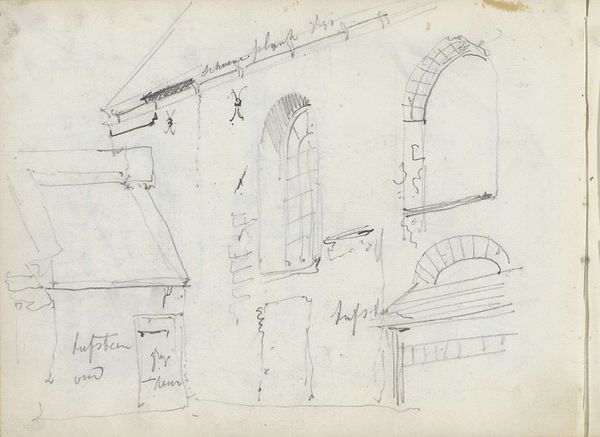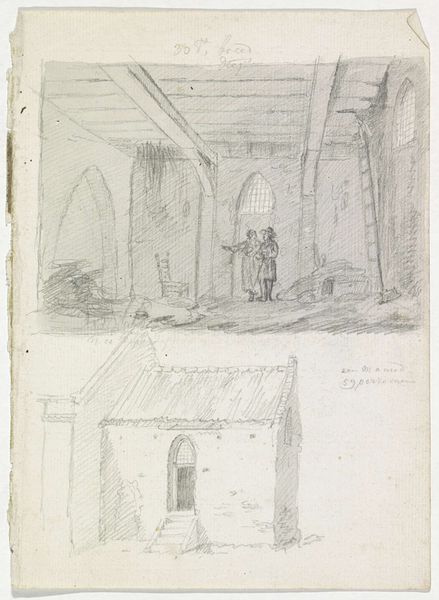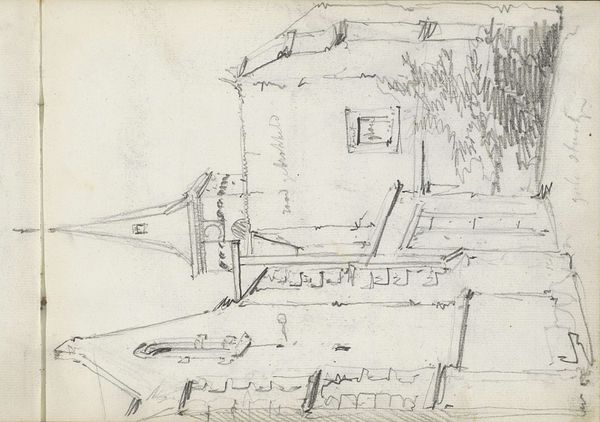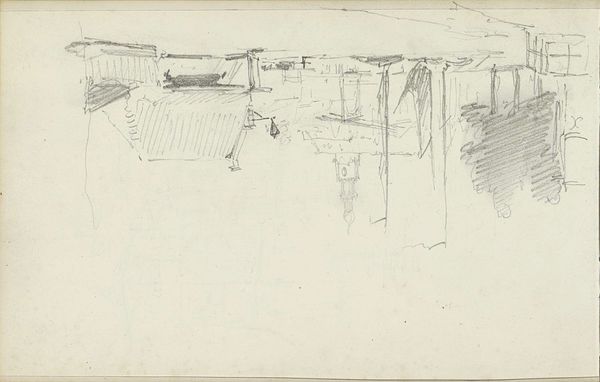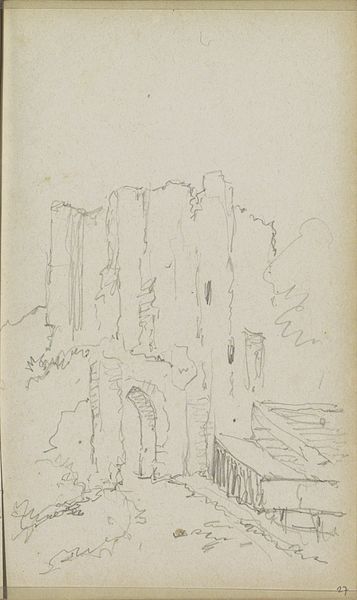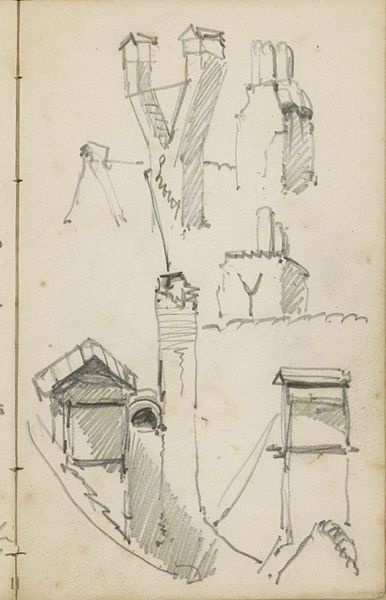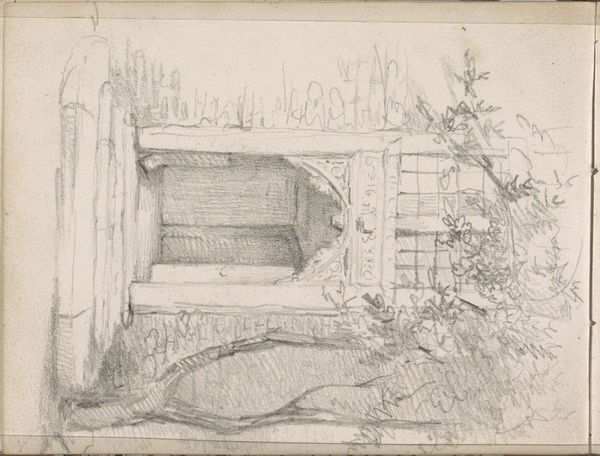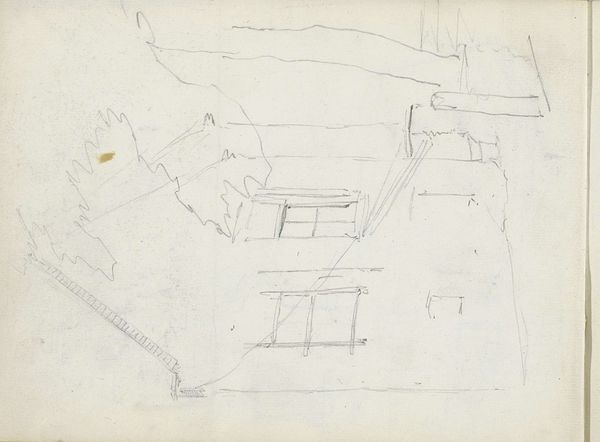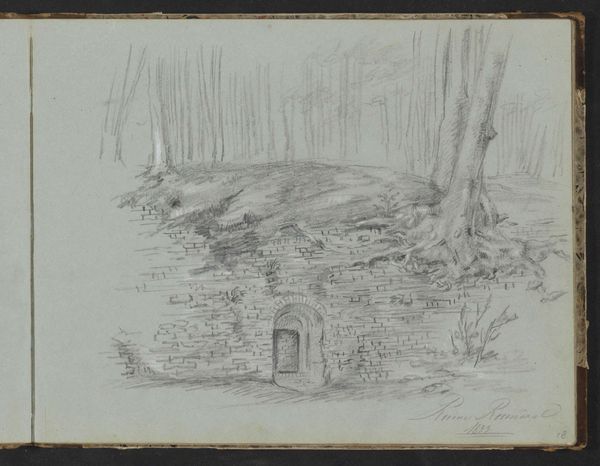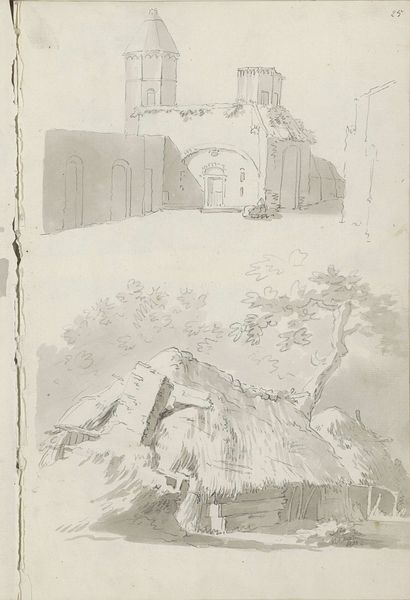
drawing, paper, pencil
#
drawing
#
landscape
#
paper
#
form
#
geometric
#
pencil
#
line
#
northern-renaissance
#
realism
Copyright: Rijks Museum: Open Domain
Curator: Willem Koekkoek's drawing, dating between 1849 and 1895, presents an exterior view of a church wall, complete with a buttress, rendered in pencil on paper. It resides here at the Rijksmuseum. Editor: It's strikingly minimal, isn't it? All those sharp angles rendered with such a light touch, creates an airy, almost ethereal quality despite depicting such a solid, grounded structure. Curator: Indeed. I see in it Koekkoek's reflection upon power, in that the church held socio-political sway at the time. I question what the unsteadiness of the artist's lines and the rawness of the sketch betray in relation to his own alignment. Was he perhaps critiquing that power through an almost dismissive rendition of its architectural manifestation? Editor: Interesting lens. I am much more interested in the technique itself. Note how the drawing emphasizes geometric form through the stark linearity of the pencil strokes. The absence of color amplifies the play of light and shadow. Curator: And perhaps the limited detail points to a certain level of social detachment? While architectural drawings of the time often celebrate grandeur and permanence, Koekkoek presents something unfinished, prompting conversations about historical narratives embedded in stone, ones of inequality and of societal stratification. Editor: You’re framing that architectural commentary very deliberately! For me it is also fascinating how the sketch blurs the lines between precision and suggestion. Note how certain areas are meticulously detailed while others are left almost deliberately vague, sparking engagement between surface and depth and an interesting compositional dynamism. Curator: Yet we also recognize that those choices are not purely compositional. The starkness could, I argue, reflect a social landscape undergoing shifts. By not presenting a romanticized image of religious institutions, the artist pushes for critical evaluation of cultural forces at play during this period. Editor: A compelling perspective, one I find challenges me to appreciate the confluence of line and history here. Curator: Thank you. It seems this drawing speaks volumes both aesthetically and historically.
Comments
No comments
Be the first to comment and join the conversation on the ultimate creative platform.
